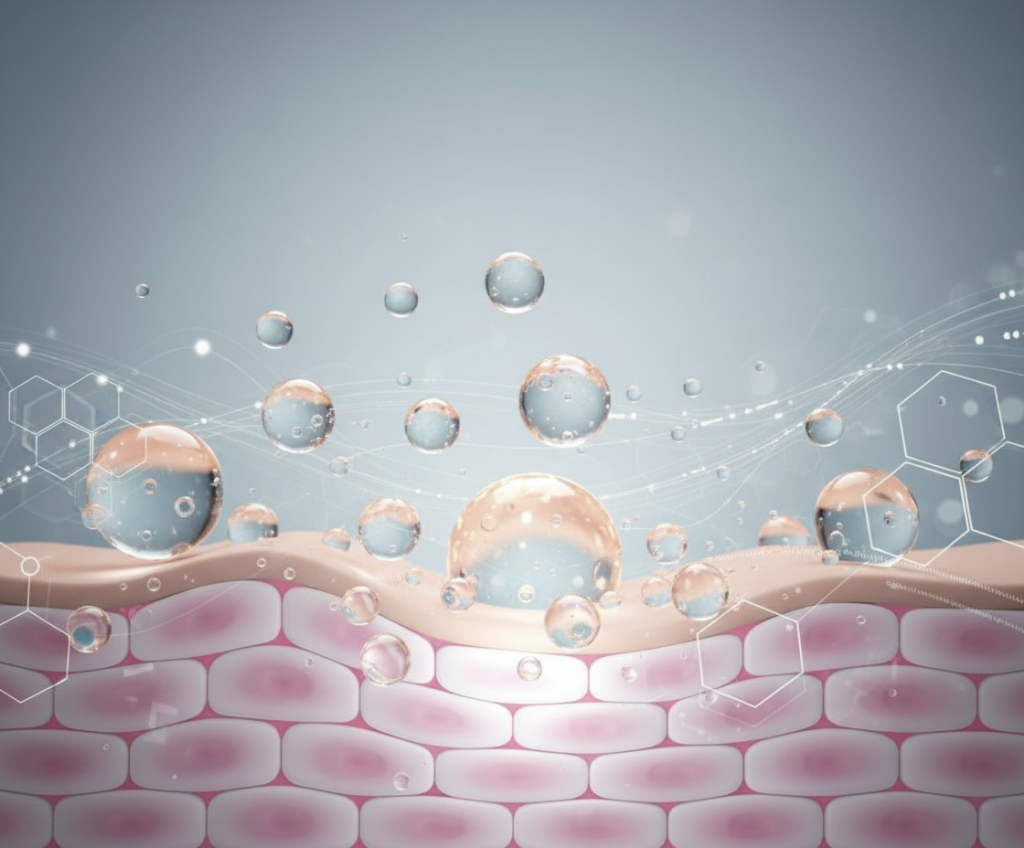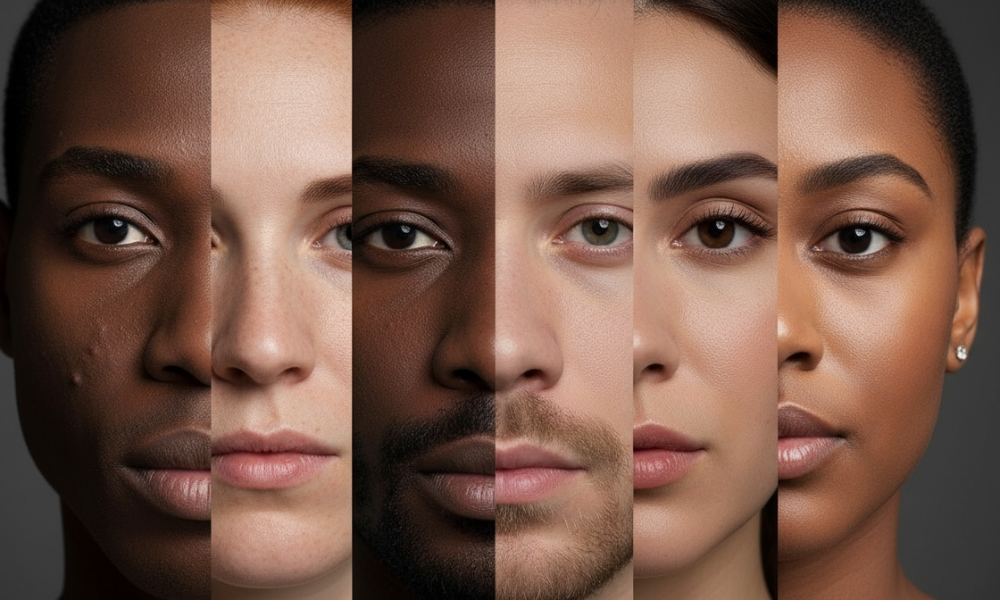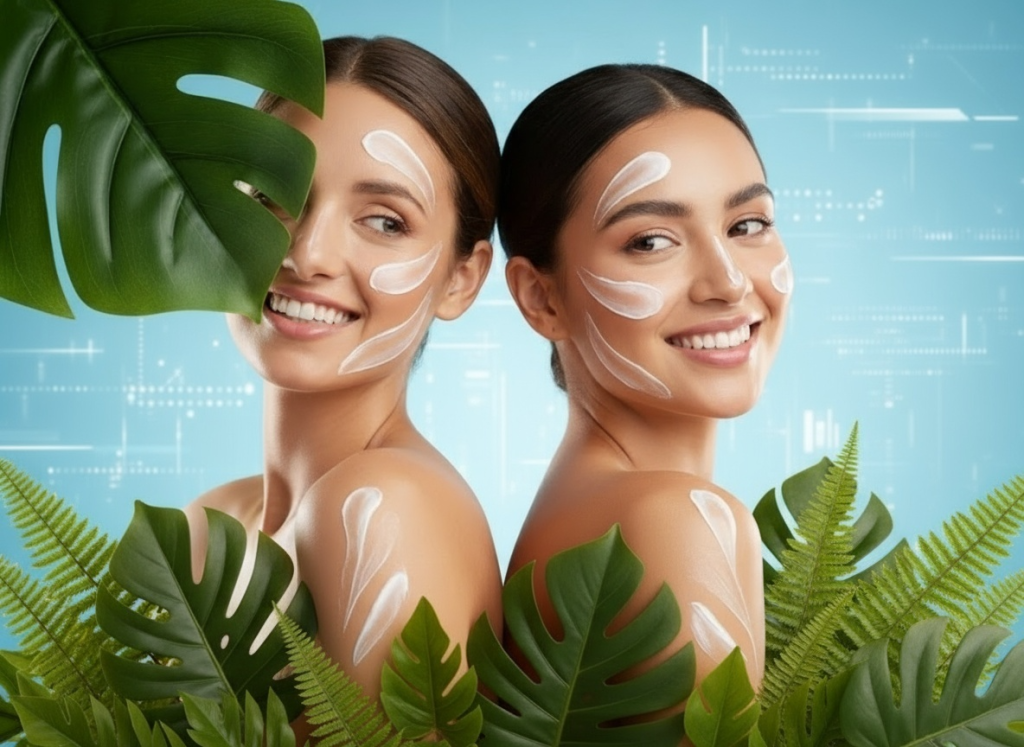In the coming decade, the global beauty market will not only grow in volume but also in complexity. The trends set to dominate 2025 and 2026 reflect an accelerated convergence of science, technology, sustainability and emotion. Following the global pandemic, consumers have become more conscious, informed and demanding, seeking genuine efficacy, transparency in ingredients and a positive impact both on their skin and on the environment.
Today, cosmetics are no longer just a product: they represent a technical, sensorial and ethical experience. The industry has moved beyond empty claims and is advancing towards a model where biotechnological innovation, supply chain traceability, functional formats and diversity are as important as texture or fragrance.
In this context, OEM/ODM laboratories such as MS Cosmetics Lab play a key role: acting as the bridge between these new consumer expectations and the development of real, stable, safe and competitive products. Throughout this article, we will explore the main cosmetic trends for 2025/2026 in formulation, ingredients, technology and consumer behaviour, with a critical and educational perspective rooted in the technical and sustainable approach that defines MS Lab.
Overview of the Beauty Market 2025/2026
Global Growth of the Cosmetics Industry
According to data from Statista and Euromonitor, the global beauty market is expected to exceed USD 580 billion by 2026, with sustained year-on-year growth of between 5% and 6%. Within this landscape, skincare will continue to be the leading segment (45% of the total), followed by haircare, make-up, and wellness products (nutricosmetics, aromatherapy, etc.).
Growth is being driven not only by major brands, but also by the rise of start-ups, niche brands, and D2C projects that find opportunities thanks to digitalisation, OEM/ODM laboratories, and more flexible production models.
From Emotional Beauty to Personalised Science
Following the pandemic, consumers integrated cosmetics into their routines as a form of emotional self-care. This drove the rise of sensorial textures, relaxing claims, and wellness-oriented propositions.
However, this phase is evolving towards personalised scientific cosmetics, where clinical evidence, proven functionality and traceable ingredients are valued. The emotional focus persists, but is enriched with technical information and objective data to support each product claim.
E-commerce and the Direct-to-Consumer Model
The consolidation of e-commerce has democratised access to emerging brands and enabled experimentation with innovative concepts on a global scale. Social media and educational content have empowered consumers, who no longer rely solely on celebrity endorsements, but seek evidence, comparisons and scientific reviews.
The Direct to Consumer (D2C) model has changed not only distribution, but also the way brands design their products: shorter development cycles, greater flexibility, constant feedback, and near real-time adaptability.
Hybrid Consumer: Scientific, Sensorial and Conscious
Today we speak of a hybrid consumer: rational and emotional, digital and physical, scientific and natural. This complexity requires brands to offer cosmetic experiences that balance:
- Technical performance: measurable efficacy, clinical studies, stability
- Sensoriality: pleasurable textures, coherent fragrances, functional packaging
- Sustainability: traceable ingredients, responsible packaging, eco-efficient processes
Brands that manage to harmonise these three pillars will hold a competitive advantage in the 2025 market and beyond.
Intersection as a Driver of Innovation
The cosmetics of the future will not be defined by a single attribute. Their value will lie at the intersection of:
- Science and nature
- Technology and sensoriality
- Wellbeing and measurable results
This new paradigm requires laboratories capable of working with cutting-edge ingredients, scientific validation methodologies, circular product design, and truthful storytelling.
Emerging Ingredients: Biotechnology and Measurable Efficacy
Exosomes: A Regenerative Revolution

Exosomes are extracellular microvesicles produced by stem cells that act as natural messengers between cells. In advanced cosmetics, they have positioned themselves as one of the most promising ingredients thanks to their ability to promote cellular regeneration, modulate inflammatory processes, and stimulate collagen and elastin production.
Their most notable applications include:
- Anti-ageing treatments with a biomimetic approach
- Post-procedure regeneration following aesthetic or dermatological treatments
- Hair revitalisation in anti-hair loss and strengthening lines
Despite their potential, exosomes present significant technical challenges: stability in aqueous formulas, safe extraction processes, and strict EU regulation. However, advances in encapsulation and fermentation are making their inclusion in high-end products possible.
Next-Generation Ceramides
Ceramides are fundamental lipids for skin barrier integrity. In 2025/2026, we will see a new generation of biotechnological ceramides designed to offer greater compatibility with different skin types, including sensitive or compromised skin.
Key innovations include:
- Encapsulated ceramides for sustained release
- Synergies with essential fatty acids and plant-derived cholesterol
- Support for cutaneous microbiome balance
These formulations contribute not only to hydration, but also to a more robust defence against environmental aggressors and oxidative stress.
Green Biotechnology: Fermentation and Cell Culture
So-called green biotechnology refers to the use of microorganisms (yeasts, bacteria, algae) to produce cosmetic ingredients sustainably. It enables the production of purer, more reproducible actives with reduced water usage and no impact on natural ecosystems.
Emerging examples:
- Polysaccharides from algae cultivated in bioreactors
- Postbiotics derived from specific fermentations
- Fermented antioxidants that are more bioavailable and stable
The use of these technologies reduces dependence on intensive cultivation and allows complete control over ingredient traceability.
Biomimetic Peptides and Plant Growth Factors
Biomimetic peptides are amino acid sequences that mimic the skin’s natural mechanisms. They act as messengers that stimulate processes such as tissue repair, collagen production, and inflammation reduction. Their high efficacy and good tolerance position them as essential in functional cosmetics for the coming years.
In parallel, plant growth factors derived from plant cell extracts represent a sustainable and ethical alternative to animal derivatives. They are used in:
- Next-generation anti-ageing formulas
- Post-sun or post-treatment repair serums
- Regenerative hair cosmetics
The Role of OEM/ODM Laboratories in Technical Integration
At MS Cosmetics Lab, we integrate these ingredients into real formulations that are safe and adapted to European and Latin American regulations. Our OEM/ODM approach allows us to:
- Select certified suppliers with complete traceability
- Stabilise complex ingredients through advanced encapsulation or emulsification techniques
- Validate efficacy with in vitro and in vivo testing
Additionally, we support brands in scientific communication, enabling them to explain the value of these ingredients without resorting to exaggerated claims or breaching regulations.
Innovative Formats: The Packaging and Application Revolution
The format in which a cosmetic product is presented is no longer simply a matter of aesthetics or functionality. In 2025/2026, packaging and application methods will be fundamental to perceived value, product lifecycle sustainability, and the user’s sensory experience. These trends respond to growing demand for practical, portable, sustainable, and technologically connected solutions.
Solid Cosmetics: Functionality Without Water
Solid cosmetics have moved beyond being an ecological niche to become a high-growth category. Eliminating water from the formula not only reduces product weight and volume (optimising logistics) but also enables the development of more concentrated textures with reduced need for preservatives.
Examples of expanding solid formats:
- Solid shampoos, conditioners, and balms—ideal for travel and everyday sustainability
- Solid serums and creams that utilise thermal fusion technologies for direct application
- Stick or bar cleansers that eliminate secondary packaging and improve usage control
Formulation challenges include ensuring stability at room temperature, guaranteeing compatibility with different skin types, and achieving sensoriality comparable to liquid products. At MS Cosmetics Lab, we develop solids with high active content, excellent release properties, and refined cosmetic feel.
Refill and Circular Packaging: The New Standard

Circular design has evolved from being added value to a basic expectation. Consumers seek products that not only appear sustainable but are sustainable from conception:
- Refillable containers that extend primary packaging lifespan
- Modular systems that allow replacement of only the internal cartridge
- Recycled and recyclable materials, such as recycled PET, lightweight glass, bioplastics, and aluminium
Additionally, eco-efficient design is gaining prominence, minimising volume and weight without sacrificing experience. Magnetic caps, dosing valves, and thread-free closures are part of the new visual language of circular beauty.
OEM/ODM laboratories such as MS Lab collaborate closely with packaging manufacturers to ensure physicochemical compatibility, content stability, safety, and functionality under real-use conditions.
Stick Formats and On-the-Go Cosmetics
Fast-paced lifestyles, frequent travel, and interest in hygienic portability have consolidated stick and roll-on formats as a cross-category staple in both facial and body care:
- Multi-functional stick balms for lips, eye contour, dry areas, or tattoos
- Stick sun protection products and concealers with high application precision
- Solid perfumes or aromatic balms with relaxing properties
These products require anhydrous emulsions or balms with good stability, avoiding the need for conventional preservatives. They must also offer a pleasant sensation on contact, leaving no residue or greasy effect. They are ideal for men’s lines, sports cosmetics, or urban routines.
Skin-Tech: Integration with Smart Technology
The convergence of cosmetics and technology is not a futuristic promise but an expanding reality. In the coming years, we will see growing adoption of smart devices and systems that personalise application, enhance efficacy, or integrate biometric metrics.
Current and emerging examples:
- Product-linked apps: routine tracking, AI skin analysis, usage reminders
- Microcurrent or LED light systems to boost actives applied at home
- Skin analysis devices that recommend bespoke products
This enables brands to offer beauty ecosystems where the physical product is complemented by a digital, educational, and personalised experience. The OEM/ODM laboratory must anticipate the technical compatibility of formulas with these devices, adjusting viscosity, pH, and absorption time.
Treatment-Makeup: The Era of Functional Hybrids
One of the most innovative areas is the development of hybrid cosmetics, where makeup not only covers but also treats. In 2025/2026, this trend will gain momentum with products such as:
- Foundations with anti-ageing peptides and high SPF
- Hydrating lipsticks with antioxidant actives
- Eyeshadows and blushers with soothing or sebum-regulating ingredients
This approach responds to consumers seeking to maximise every step of their routine. Technical development requires colour stability in the presence of actives and texture that doesn’t degrade over time. It also involves more rigorous testing processes and advanced sensory validation.
How Formats Redefine the User Experience
Beyond the technical aspects, new formats transform how consumers relate to products. Packaging, application method, and texture are integral to storytelling, brand identity, and quality perception.
At MS Cosmetics Lab, we support brands in comprehensive product design:
- Packaging testing with real compatibility assessment
- Formula adaptation to new formats
- User experience evaluation and sensory performance analysis
Additionally, we collaborate with industrial designers, packaging engineers, and sustainability experts to offer 360° beauty solutions with high added value.
New Demands of the Future Consumer
In 2025/2026, the centre of cosmetic innovation will be determined by a new type of consumer: more informed, more demanding, and more sensitive to the environmental and emotional impact of their decisions. This profile is driving a structural transformation in how beauty products are conceived, developed, formulated, and communicated.
Traceability and Total Transparency
Today’s consumer is no longer satisfied with claims like “natural” or “sustainable.” They want proof, they want verification, they want traceability:
- Where do the ingredients come from?
- How are they extracted?
- What impact does their production have?
Blockchain traceability systems, interactive QR codes, and auditable certificates are becoming part of product packaging and storytelling.
Transparency also extends to formula development:
- Clean labels, without ambiguous language
- Claims with technical backing and clinical studies
- Clear information on allergens, active concentrations, and origin (synthetic, plant-based, or biotechnological)
OEM/ODM laboratories like MS Cosmetics Lab incorporate digital documentation systems, batch traceability, and technical monitoring from the source of the active ingredient to the final product. This allows brands to build trust through truth, not marketing.
Conscious Sensoriality: Wellbeing Beyond the Skin
The cosmetic experience is no longer just tactile or visual. Consumers seek guilt-free pleasure: pleasant textures, enveloping aromas, functional packaging, but all within a framework of sustainability and respect for the environment.
This new concept of conscious sensoriality includes:
- Light emulsions that do not overload the skin or the environment
- Fragrances of botanical or biodegradable origin, free from allergens
- Transformative textures: gels that become oils, balms that melt on contact
Sensoriality must also be aligned with the user’s emotional state. In this context, a new category emerges: neurocosmetics.
Neurocosmetics: Skin, Mind, and Wellbeing
Neurocosmetics is based on the ability of certain active ingredients to modulate communication between skin cells and the nervous system. Its objective: to improve the emotional perception of care, reducing stress and anxiety whilst generating sensations of calm or energy.
Examples of neurocosmetic active ingredients:
- Adaptogenic extracts such as rhodiola, ginseng, or ashwagandha
- Neuroactive peptides that stimulate beta-endorphin production
- Functional fragrances designed with neuroscientists to activate brain areas associated with wellbeing
At MS Cosmetics Lab, we work with ingredient laboratories specialising in neuroactive compounds, integrating these innovations into balanced, stable, and clinically validated formulas. This type of cosmetics represents a new bridge between science, sensoriality, and mental health.
Comprehensive Sustainability: Beyond Greenwashing
By 2025/2026, sustainability will cease to be an “added value” and will become a condition of existence for any brand aspiring to compete globally.
Having a recycled bottle is no longer enough. Consumers will evaluate:
- Ingredient origin: is it ethically cultivated? Does it require large quantities of water? Is it local or imported?
- Energy used in production: is the factory carbon neutral? Is there energy efficiency?
- Logistics and distribution: what transport footprint does the product have at each stage?
- End of life cycle: is it recyclable, compostable, or refillable?
At MS Cosmetics Lab, we implement:
- Eco-efficient formulation criteria
- Life cycle analysis (LCA)
- Environmental impact assessment
- Supplier selection with international certifications
All this translates into truly sustainable products, not just “green” on the outside.
Inclusivity and Diversity from Formulation

One of the major learnings post-2020 is that beauty does not have a single face. Future cosmetics will be inclusive from conception, not just in marketing:
- Wide range of makeup shades adapted to different phototypes
- Dermatologically compatible formulations for different skin types, ages, and conditions (rosacea, adult acne, mature skin, etc.)
- Universal care products, gender-neutral and culturally neutral
Non-binary cosmetics will become increasingly relevant. This includes packaging design, brand language, and sensory compatibility. Formulation must avoid stereotypical fragrances or textures that limit use by skin type or climate.
At MS Lab, we develop lines for brands seeking to be truly inclusive, conducting tests with diverse groups and reformulating emulsions, active ingredients, and fragrances according to their psychodermatological profiles.
Personalisation and Cosmetic Data
With advances in artificial intelligence and big data analysis, cosmetic development can increasingly integrate with user information:
- Bespoke formulation based on skin analysis or lifestyle
- Dynamic recommendations via apps linked to products
- Seasonal or geographical adjustments according to humidity, UV levels, pollution, etc.
This approach requires OEM/ODM laboratories to work with:
- Modular bases
- Highly stable active ingredients
- Very precise quality control systems
At MS Lab, we are already exploring semi-personalised formulation projects, with the possibility of integrating active ingredient capsules, adaptive ingredients, and “intelligent” formulations that respond to the environment.
Outlook: Where Cosmetic Innovation is Heading
By observing trends, technologies, and new consumer profiles, we can outline what cosmetics will look like in the immediate future.
Convergence of Science, Technology, and Emotion
The most valued products will be those that manage to integrate:
- Clinically proven efficacy
- Safe and sustainable ingredients
- Measurable sensorial experience
- Emotional or mental benefit associated with use
Cosmetics will shift from being merely “skincare” to forming part of a holistic wellbeing ecosystem, where how it makes you feel, what it communicates about you, and its impact on the world also matter.
Biotechnology as the Foundation of Development
The next revolution won’t just be green—it will be biotechnological:
- Fermentation, cell culture, and enzymatic synthesis will replace scarce ingredients or those with high environmental impact
- Laboratories will produce bespoke active ingredients that are more stable, with greater bioavailability, and without requiring animal or plant farming
- Partnerships between bioengineering startups and OEM/ODM cosmetic laboratories will become consolidated
At MS Cosmetics Lab, we are already involved in projects that integrate these technologies, designing clean formulations with clinical performance and complete traceability.
New Ways of Interacting with Cosmetics
Digitalisation will continue to open new pathways:
- Cosmetics connected to apps
- Artificial intelligence that recommends, personalises, and adjusts routines
- Augmented reality to try products or analyse skin from home
Packaging will no longer be just containers: it will become channels for information, education, and personalisation.
The Cosmetic Laboratory of the Future
Laboratories like MS Cosmetics Lab will not only develop formulas. They will be strategic partners in:
- Verifiable sustainability (LCA, carbon footprint, certified materials)
- Technological connectivity (compatibility with devices, apps, or personalised e-commerce)
- Innovation in sensoriality (biofragrances, new textures, neurocosmetics)
- Global regulatory design (adaptation to EU, LATAM, Asian, and US regulations)
OEM/ODM is transforming into a multidisciplinary hub where science, sustainability, design, user experience, and market vision coexist.
Conclusion
The 2025/2026 horizon defines a tipping point in the cosmetics industry. The products that will dominate the market are those that manage to balance scientific innovation, transparency, sustainability, and emotional experience. It’s not just about following trends, but anticipating them, interpreting them with technical rigour, and turning them into real value propositions.
For emerging brands, startups, or niche projects, the challenge lies in developing formulas that don’t just deliver, but connect: with the skin, with the mind, and with the environment.
At MS Cosmetics Lab, we offer that bridge between ideas and execution. We combine advanced formulation, cutting-edge ingredients, sustainability expertise, and a global OEM/ODM vision to create products that respond to the present and shape the future.
At MS Cosmetics Lab, we help create next-generation products, combining cutting-edge ingredients, technology, and genuine sustainability.
📩 Contact us and turn 2025/2026 trends into opportunities for your brand.




